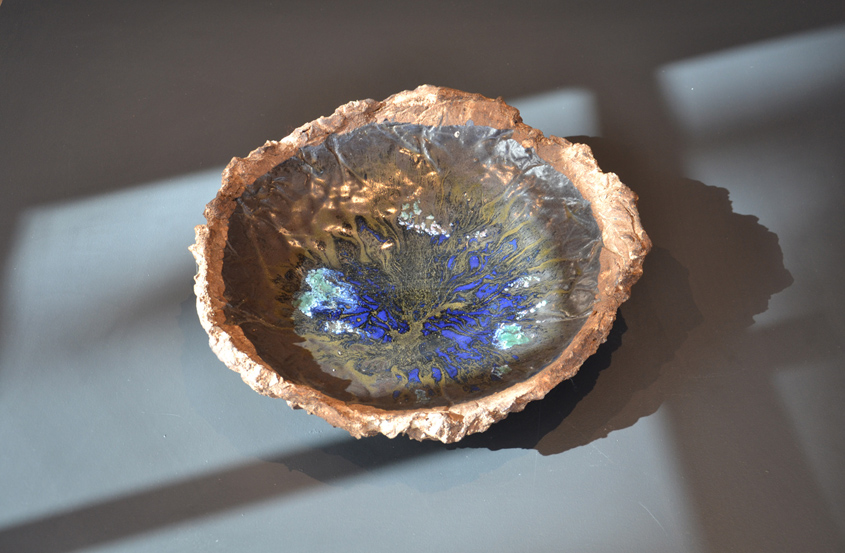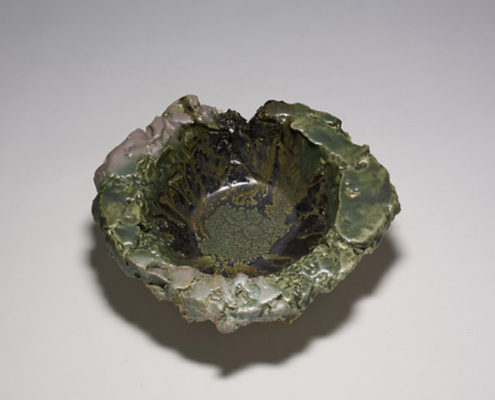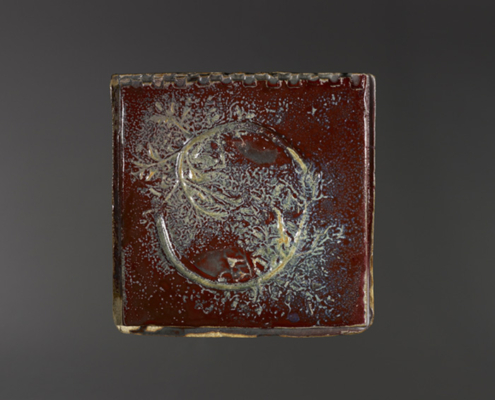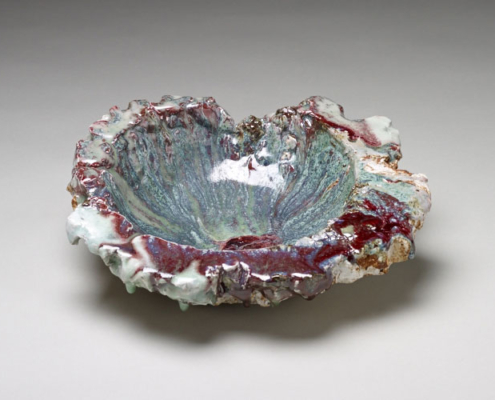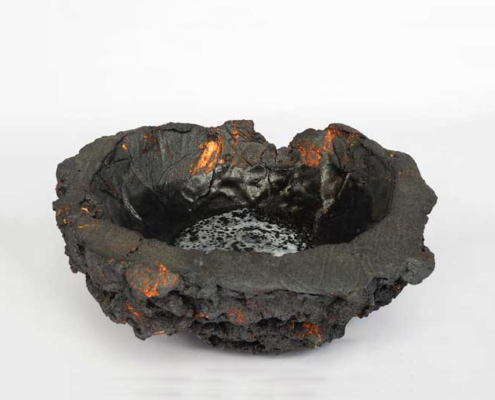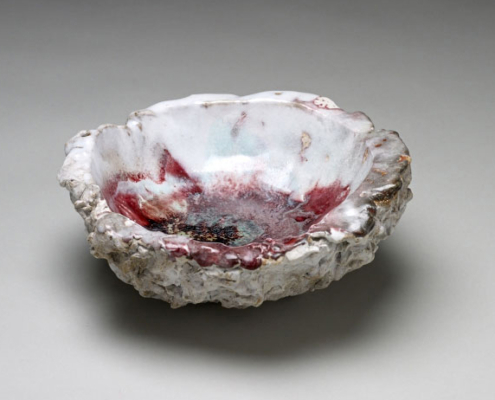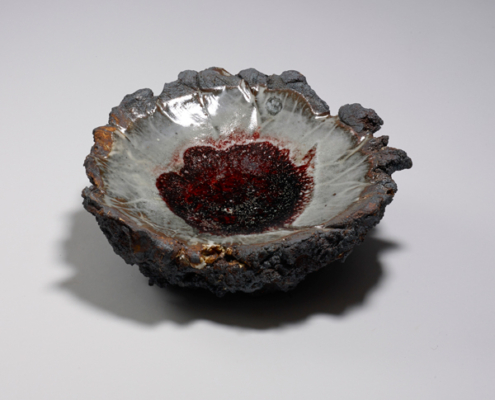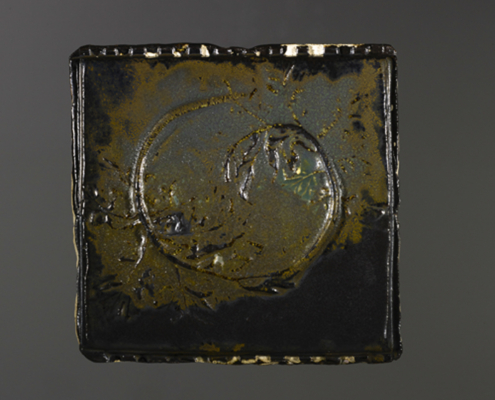“Strangely, I have “acre” this unity of earth measurement, as my surname! My name is almost enough to define me.”
Of Parisian origin, Agathe Larpent frequented city squares more often than the countryside, but she was always very strongly attracted by earth. She remembers as a child being taken to Crépy-en-Vallois, near Bonneuil (Oise) to her parents’ friends’ house where a red earth track led to a brickworks and to its tunnel kiln. Were these images fateful?
Several decades later, Agathe Larpent is a ceramist/plastician of international fame. She has chosen to work in the Alps of High Provence, where her living environment strongly inspires her work. To speak of a plastic approach is not an understatement here: the earth is metamorphosed, matters and colours mixed with the singular aim of appealing to the senses.
The works presented – crucibles and bas-reliefs – most specially created for this personal exhibition at the Galerie de L’Ancienne Poste, are a follow-on from the installation conceived in the Summer 2012 at Salagon Priory (Alps of Haute-Provence).
Agathe Larpent is present in the collections of some of the greatest museums as well as the National Contemporary Art Fund .
In Agathe Larpent’s hand , clay is colour. For the moment, we leave behind frothy whites and celadons for the strong and complementary colours of reds and greens. Forceful, dark, and unique these Crucibles and Reliefs, in stoneware and in porcelain, are the fruit of a curious alchemy, catching the light, they speak of depths and heavens.
The reliefs of acanthus echo medieval gardens, or the ethno-botanique garden of Salagon Abbey. Moulded alive, the flower winds round drawing a pattern linking plant to mineral.
Agathe’s first Crucibles date back to the year 2000 and her exhibition at the Ziem Museum at Martgues. Their thick matter is split and laminated almost to breaking point. They probe “minerality” and form a symbolic link between the timeless and the constructed object. They are those time-hollowed rocks, where rain water collects and reflects the sky. The lustrine water wherein the tresses of green water-sprites move to the upper lip of the shady conch. (Julien Gracq). They mirror the chancel, the cloister and the fountains, of the Roman monasteries which were the sites of her recent exhibitions (Boscodon in 2011 and Salagon in 2012). The water and the light lend to these earth stones a spiritual landscape, green and mossy for some, sanguine and profoundly humane for others..
Stéphanie Le Follic-Hadida
Doctor in Art History

